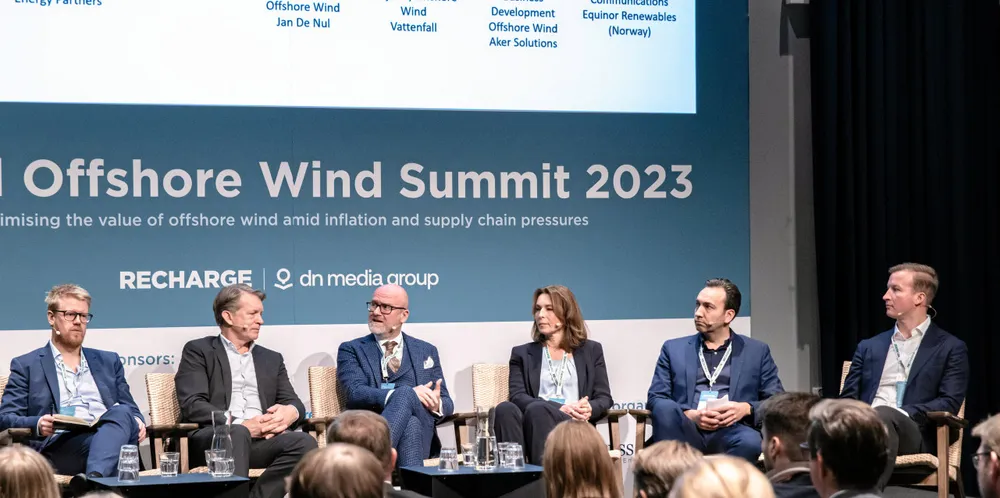'World's biggest offshore wind vessel already struggling to keep pace with turbines'
Scaling up by OEMs making investment in installation vessels unsustainable, says Jan De Nul

A giant Jan De Nul vessel that installed the first GE Haliade-X 13MW turbines at the world’s biggest offshore wind project is already struggling with ballooning future machine scales just a year after being built, said the company’s offshore wind chief as he called for size limits and standardisation.
When he started out in the industry 15 years ago, Willems said that if he had “told anybody that there would be a 1,500 tonne monopile” they would have “laughed me out of the room.”
“We’re looking at 4,500 tonnes now. Where does it stop?”
Without a limit on component sizes and standardisation, he said Jan De Nul “will no longer be in a position where we can invest.”
Hans Hansen, head of business development at Norway's Fred Olsen Windcarrier, echoed Willems' concerns on a separate panel, saying that "many years ago" his company had "gone to the market" and asked what size to build its vessels.
However, "only a few years later," the company was having to increase the vessels' cranes to keep pace with turbines.
'We need to know the size'
Willems stressed that standardisation and size limits on turbine sizes cannot be only in Europe or the US. “That is not going to work, it needs to be worldwide.”
“We will get to a certain point where there is a limit,” he said, “purely due to practicality.”
“It doesn’t matter if that is 15MW, 20MW, 22MW or higher,” he said. “As long as we know what the standard will be and what the maximum will be.”
The limit “doesn’t need to be set in stone forever,” he added, but there must be a level of “predictability.”
Willems also lamented a lack of “transparency” from OEMs on their plans for future turbines. “That doesn’t make our job easier.”
However, he believes the industry should “regulate itself” rather than have government or EU intervention.
Tony Christian Tiller, head of communications in Norway for Equinor, one of the developers of Dogger Bank, agreed that it is “obvious that this industry hasn’t reached the level of standardisation we need.”
There is the “bigger is better approach,” he said. The question is “where this stops” and, more importantly, “who gets to decide that.”
'Project cancellations disturbing'
However Katteland said that the fact has a broader framework agreement with Orsted to supply cable for all its North American offshore wind farms has helped assuage concerns as the developer has “other projects in the pipeline.”
Kristian Mikalsen, head of business development at offshore engineering contractor Aker Solutions, agreed that suppliers “cannot make huge investments if projects are suddenly getting cancelled.”
Suppliers are also moving away from “lump sum” contracts towards cooperation agreements, he said, because with projects being tendered earlier and earlier, “how are you going to price a project that is being delivered seven years from now.”
With events such as the war in Ukraine upending global markets, he said that lump sum contracts have the potential to “almost bankrupt companies" if they go wrong.
(Copyright)